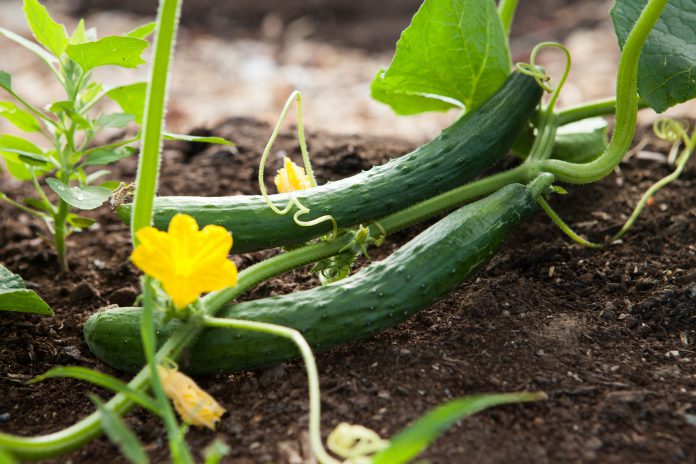Cucumbers are a staple in many gardens and diets, but have you ever stopped to think about the fascinating life cycle of these crisp and refreshing vegetables? From seed to harvest, cucumber plants go through an intricate process that involves pollinators, reproduction, and specific environmental needs. In this blog post, we’ll dive deep into the captivating and complex world of a cucumber plant’s life cycle. So grab your gardening gloves and let’s get started!
The different stages of a cucumber plant’s life cycle
Cucumber plants have a fascinating and intricate life cycle that can be broken down into several stages. The first stage is the seedling phase, where the cucumber plant emerges from its seed and develops its first set of leaves. During this stage, it’s important to keep the soil moist but not overly watered.
The second stage is known as the vegetative growth phase. This is when the cucumber plant starts to grow vigorously, producing more leaves and stems. During this phase, it’s crucial to provide enough space for the plant to spread out and support it with stakes or trellises if necessary.
Once the cucumber plant reaches maturity, it enters into its reproductive phase. This is when flowers start to bloom on the vine, attracting pollinators like bees and butterflies that will help fertilize them.
After successful pollination takes place, cucumbers start to form on their own vines in what marks the fruiting stage of their life cycle. It’s important during this time to monitor moisture levels carefully because dehydration can lead to misshapen or bitter cucumbers.
As summer comes along and temperatures rise sharply in many areas throughout North America Cucumbers reach full maturity and are ready for harvest!
The role of pollinators in cucumber plants
Pollinators are crucial to the reproduction of cucumber plants. As with most flowering plants, cucumbers rely on pollinators like bees and butterflies to transfer pollen from the male flowers to the female flowers. Without pollination, a cucumber plant will not produce fruit.
Male and female cucumber flowers are usually produced separately, on different parts of the same plant. Male flowers typically bloom first and produce pollen that is collected by visiting pollinators. Female flowers, which have an ovary at their base where the fruit develops once fertilized, only open for a day or two before they wilt away if they aren’t fertilized.
Having enough pollinators around is key to ensuring good yields- so it’s important to create habitat for them in your garden or farm! You can do this by planting native wildflowers alongside your crops or even building bee houses!
In summary, without these hardworking insects visiting our gardens and farms every day we would be unable to enjoy delicious cucumbers each summer!
How cucumber plants reproduce
Cucumber plants reproduce through pollination, which is the transfer of pollen from male to female flowers. Cucumbers have separate male and female flowers on the same plant, so they rely on insects such as bees and butterflies to transfer the pollen.
The male cucumber flower produces pollen while the female cucumber flower has a stigma that receives the pollen. When a pollinator visits a male flower for nectar or pollen, it may accidentally brush against its anther and carry some of its yellow powder-like substance to another flower.
Once pollinated, cucumbers will start growing behind the base of each flower. These immature fruits will eventually grow into full-size cucumbers if they receive enough water, sunlight, and nutrients.
It’s important to note that not all cucumber plants produce fruit with seeds inside. Some varieties are specifically bred for seedless cucumbers by crossing two different types of cucumber plants with different numbers of chromosomes.
Understanding how cucumber plants reproduce can help gardeners ensure proper pollination for healthy and fruitful crops.
What cucumbers need to grow
If you’re planning to grow cucumbers, it’s important to know what they need in order to thrive. Cucumbers are warm-season vegetables that require plenty of sunlight and warmth to grow properly.
First and foremost, cucumber plants need a well-draining soil with a pH level between 6.0 and 7.0. They also need regular watering as they have shallow roots that can dry out quickly.
Fertilization is another key element in growing healthy cucumbers. It’s recommended to fertilize the soil before planting with an all-purpose fertilizer or compost mix rich in nitrogen, phosphorus, and potassium.
In addition, cucumber plants benefit from trellising or staking for support as their vines can become quite heavy once fruit starts forming. This method not only helps keep the plant upright but also promotes better air circulation which reduces the risk of diseases such as powdery mildew.
It’s important to monitor your cucumber plant regularly for signs of pests such as aphids or cucumber beetles which can damage both leaves and fruits if left untreated. Consider using organic pest control methods like neem oil spray or beneficial insects like ladybugs instead of harmful pesticides.
Providing these basic needs will help ensure successful growth of your own homegrown cucumbers!
How to harvest cucumbers
Harvesting cucumbers can be a rewarding experience, but it requires some knowledge and care to ensure you get the best results. The first step is to check your cucumber plants regularly for ripe fruit. Cucumbers should be harvested when they’re about 6-8 inches long, depending on the variety.
When harvesting cucumbers, it’s important not to pull them off the vine. Instead, use a sharp pair of scissors or pruning shears to cut the stem just above the fruit. This will prevent damage to both the cucumber and plant.
Be sure to harvest your cucumbers frequently, every two or three days if possible, even if they’re small. Leaving ripe cucumbers on the vine too long can slow down production and reduce overall yields.
If you notice any yellowing or browning of leaves near your cucumber fruits, remove those leaves as soon as possible because this could signal disease that may affect other parts of your garden.
By following these simple tips for harvesting cucumbers, you’ll enjoy delicious homegrown produce all season long!
Cucumber plant care
By now, you have a better understanding of the captivating and complex life cycle of a cucumber plant. From its humble beginnings as a seed to its final form as an edible fruit, every stage is crucial to its survival and growth.
However, for your cucumber plants to thrive, they need proper care. Regular watering, fertilizing, pruning of leaves and stems, controlling pests and diseases are all essential aspects of cucumber plant care.
So if you’re planning on growing cucumbers in your garden or farm at any point in time, make sure that you pay close attention to their needs. With adequate care and attention given throughout each stage of their life cycle – from seedling emergence up until harvest time – you’ll be rewarded with bountiful yields that are sure to impress even the most discerning palates.













